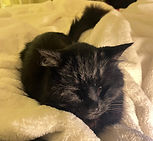
5. The Neurula
Free content. Always.
By the end of gastrulation, the embryo elongates, and the head-tail axis (the anterior-posterior axis) is formed. This formation is called the neurula (blob 8 for overhead view, blob 9 for mid-section view).

The neurula contains all stem cells needed to form the central nervous system, which contains the brain and spinal cord. Here's what the neurula looks like in real life (top-down view):

The highlighted central portion of the neurula is called the neural plate. The neural plate is a flat sheet of cells sitting on top of the notochord (a "rod" formed by the mesoderm after gastrulation). Here are some side view, cross-section depictions of the neural plate:

The neural plate needs to roll into a tube to form the nervous system. The tube becomes the spinal cord, and the cord enlarges in the anterior end to become the brain. You may have heard the pop science phrase that "we are all tubes." This is true in every sense, from development to maturation. Here is a cartoon preview of this process:

Creases indicate hinge points with properties that allow the neural plate to fold. The ectoderm cells (dark blue) on either side of the neural plate need to join, so that the neural tube is rolled up inside the body and the epidermis needs to cover it. The neural plate first meets in the middle, then zippers up anteriorly-posteriorly.
Let's go back to the columnar neural plate cells. For folding to start, these cells have to undergo apical constriction, a process that involves individual cell shape change. The hinge points are formed by apical constriction, which causes locations in the neural plate to bend:

The side of the cell on the outside membrane is the apical side; the side closer to the notochord is the basal side. There is a belt (in green) near the apical side of the cell that "tightens" to make select neural plate cells into a trapezoidal shape:

Next, convergent extension takes place. As the cell is rolling up via hinge points, neural plate cells interculate (i.e., stagger) to make the region narrower and longer.

Note: you can visibly see the apical constriction of the cells in blue. Convergent extension happens because cells have lamellipodia and filipodia at one end, acting as little tails that allow cells to move through a molecular signaling pathway called the Planar Cell Polarity Pathway. Any disturbances to this pathway will disrupt formation of the neural tube.
Once both ends of the neural tube come together, they have to interact with each other to fuse; as in, the surface ectoderm needs to adhere to surface ectoderm, and neuroepithelium needs to adhere to neural epithelium. Cells fuse due to membrane-bound cadherins and homophilic binding. Let's break it down:
Surface ectoderm cells express E-cadherin on their surface; E-cadherin binds to E-cadherin, fusing the epidermis. Neural plate cells express N-cadherin on their surface; N-cadherin binds to E-cadherin, fusing the neural plate into the neural tube. E-cadherin cannot bind with N-cadherin, therefore the neural plate cells will not fuse with ectoderm cells and vice versa.
As always, I hope you learned something new (even if it is a factoid) and are finding developmental neurobiology interesting (even if just a little bit more). Hope to see you back.
Neurocookie.org believes that neuroscience should be fun, accessible, interesting, jargon-free, and welcoming to all who wishes to learn, no matter your background.
Your Instructor
Cocoa (Cookie)

Cookie the science cat.